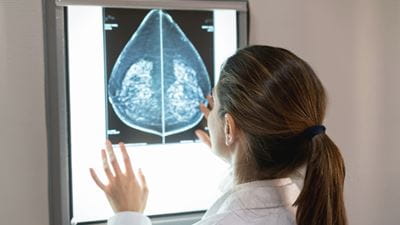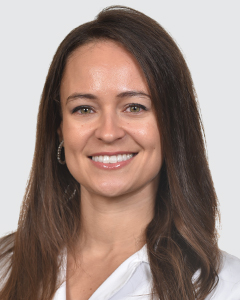Breast Lumps Aren’t Always Cancer, They Could Be Fibroadenomas
When a woman notices a lump in her breast, her first thought is: Could it be cancer? But not all tumors in the breast are cancerous. A fibroadenoma is a benign tumor of the connective tissue. It affects 10 percent of women, making it the most common solid mass of the breast.
It is often found in women between the ages of 15 and 35. Younger women may first notice the tumor as a hard, smooth, movable mass. In many cases, the tumor is painless. Older, menopausal women may not have symptoms, but the tumor may first be seen on a mammogram. A woman can have more than one fibroadenoma, and the tumors can appear in one or both breasts.
About Fibroadenomas
Fibroadenomas are an overgrowth of glandular and supporting tissue of the breasts. Although we don’t know exactly why a person develops this type of tumor, we know the tumors are hormonally sensitive to estrogen and change size throughout a woman’s lifetime. During puberty and pregnancy, fibroadenomas can get larger. After menopause, the tumors often calcify and get smaller.
Fibroadenomas are often identified on a mammogram or ultrasound. If the mass appears to be a fibroadenoma, follow-up imaging may be recommended every six months for one year and annually thereafter. If the tumor remains stable, your doctor may continue to monitor as needed.
If the mass doesn’t have typical fibroadenoma characteristics, your doctor may perform a percutaneous core biopsy, in which a needle extracts a small tissue sample from the tumor core for evaluation.
Do Fibroadenomas Need to Be Treated?
Since fibroadenomas are benign, they don’t necessarily have to be removed.  Instead, they can be observed through follow-up ultrasounds or mammograms. If the tumors are large, growing, cause severe discomfort or have other suspicious characteristics, they can be removed. Because some fibroadenomas can only be seen with an ultrasound or mammogram, a localization procedure to mark the tumor may be needed before removal.
Instead, they can be observed through follow-up ultrasounds or mammograms. If the tumors are large, growing, cause severe discomfort or have other suspicious characteristics, they can be removed. Because some fibroadenomas can only be seen with an ultrasound or mammogram, a localization procedure to mark the tumor may be needed before removal.
Although fibroadenomas usually are not associated with breast cancer, it is still important to monitor them for any growth or change. Women with fibroadenomas may have a 2 to 3 times increased risk of developing breast cancer during their lifetime, particularly if they have a family history of breast cancer or breasts that have particularly dense breast tissue.
If you notice a lump in your breast or if an ultrasound or mammogram reveals a tumor, don’t panic. Instead, talk with your doctor to determine if you have a fibroadenoma.
Are you interested in learning more about the Orlando Health Imaging Centers?
At Orlando Health Imaging Centers, our expert medical teams use advanced imaging tools that produce highly detailed images and precise results. Our facilities are accredited by the American College of Radiology (ACR) for our staff qualifications, image quality, safety policies and quality assurance.
Schedule an Appointment










